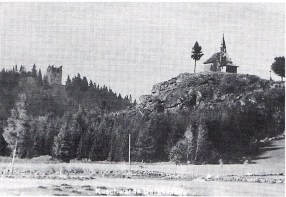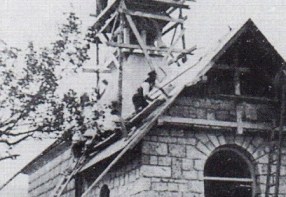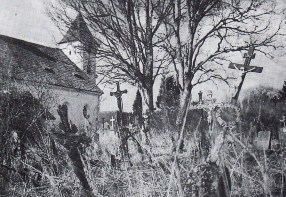HISTORY OF THE VILLAGE
The settlement of the region started in 1672 with the foundation of the place called Bärenloch (Bear's Den). According to the privilege of the manorial administration in Český Krumlov of 18th June 1688 the settlement continued by an arrival of further six families. Two years later, in 1690, the forest district of Kunvart was established in the place. The place was renamed in 1735 to Kuschwarda, alias Kunvart, after the castle in vicinity thereof. In 1780, building of a church was initiated, the school and the rectory were founded. In 1845 Kunvart promoted to township and three annual markets were authorized there. Over eight hundred people lived in here, mostly of German nationality. Besides the school there also were the post office, a hotel, a mill and workshops manufacturing household tools and instruments (e.g. sieves or wooden dishes). The village was growing fast in course of the 19th century. While in 1790 only 22 homesteads stayed in here, 50 years later there were already 65 houses with 626 inhabitants. In 1910 Stráný had 93 houses and 680 inhabitants, of whom 2 registered as Czech-speaking.
Modern history
The more sorrowful part of the village history started to be written in the 20th century. The region was separated from the Czech Republic and attached to Bavaria as a part of German Empire in September 1938, upon agreement of the Munich Conference. The Czechoslovak garrison together with the state employees and authorities left the village on 30th September 1938. The place was occupied by German Army on 1st October 1938. Liberation combats started on 27th April 1945 and continued for full nine days. In 1951 the government established a prohibited zone along the border with Germany and Austria. All the inhabitants of the area had to be displaced. The prohibited area was adjacent to the borderline zone where the entrance was allowed only upon special permission. The frontier was "protected" by sapper-engineer protection troops.
The village went through significant development after the "Velvet Revolution" in 1989. New sewerage system and new illumination of public areas were built. Apartment houses from 1960's went through thorough reconstruction, including new façades and footpaths. The completely reconstructed building of former school houses Municipal Office, fitness gym, library and clubroom.



